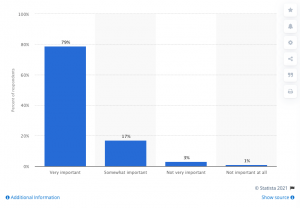A Data Frenzy At Microsoft Advertising
It seems Microsoft Advertising is providing more ways for publishers and advertisers to gain analysis of data.
The company on Tuesday launched an analytics dashboard to help publishers measure advertising revenue.
Monetize Insights, the dashboard, launched worldwide on Microsoft Monetize, the company’s supply-side platform to help publishers sell owned and operated inventory.
The graphs and comparison charts tell the complete story of ad-revenue performance, eliminating the need for complex reporting.
There are filters to examine data related to revenue drivers and inventory metrics, and contextual bid rejection details such as ad-quality settings, demand issues, and bid prices or floors. Floor rules are the minimum bid amount that a publisher can set for inventory.
The bid-rejection tabs offer access to information about revenue-impacting blocks, such as ad-quality settings, enabling publishers to understand how inventory settings influence sales.
Clear bid-rejection values are intended to make it easier to pinpoint adjustments that can unlock revenue or validate historic decisions.
All publishers that are leveraging Microsoft Monetize to sell owned-and-operated inventory can use Monetize Insights to analyze their ad-revenue performance.
The total revenue tab provides access to key performance indicators (KPIs) such as impressions, ad requests, fill rate, win rate, and revenue. Its comparison charts reveal trends and significant changes.
Last week, Microsoft Advertising introduced four insights for brands to reach last-minute shoppers waiting for Black Friday and Cyber Monday deals.
Holiday sales, on average, represent 20% of annual sales across most industries, according to the National Retail Federation.
NFR forecasts this year that holiday spending in the U.S. will reach record levels during November and December, with growth of between 3% and 4% in comparison to 2022 — rising to between $957.3 billion and $966.6 billion.
Amazon today announced its extended Black Friday and Cyber Monday holiday shopping event, which kicked off November 17 and continued through November 27, was its biggest ever compared with the same 11-day period ending on Cyber Monday in previous years.
Shopify broke records with weekend sales of $9.3 billion globally, up from $7.5 billion in the prior year. From the start of Black Friday in New Zealand through the end of Black Friday in California, merchants on Shopify generated 24% increase in sales from Black Friday and Cyber Monday in 2022. More than 61 million consumers made a purchase from a Shopify merchant, and peak sales per minute reached $4.2 million on Black Friday at 12:01PM EST.
Microsoft Advertising said mor than two-thirds of U.S. shoppers are spending most of their time online searching for coupons and deals.
Its research shows more shoppers waited for the Black Friday and Cyber Monday deals than in previous years, which aligns to the deal-seeking behavior outlined in its October whitepaper, Your Festive Season Marketing Playbook.
Search continues to be a crucial tool, facilitating both online and in-store purchases. It enables the discovery of new retailers, pre-purchase research of products, price comparisons, and much more. Some 60% of Gen Z said they use search to find the best price.
Also confirmed in Path to Purchase 2023 from Insider Intelligence, shoppers are most likely to turn to search engines regardless of where they first discovered the new brand or product. In-store discovery drives the highest rate of instant purchases—31.5% will purchase a new brand or product immediately after discovering it in-store—but search and other digital activities play an important role in the consideration stage.
Microsoft Advertiser estimates that after the major shopping holidays, Black Friday and Cyber Monday search volumes will not immediately drop and will remain high while cost per click declines. The research shows 43% of holiday clicks, and 46% of holiday conversions, occur after the five days of buying frenzy based on sales. CPAs also are roughly 13% lower than prior periods.
(7)
Report Post





